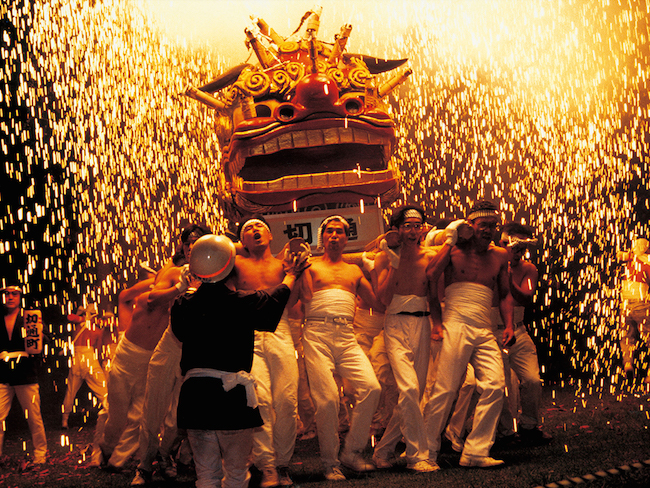Mar 22, 2018
Getting Hot Under the Collar at Tejikara Fire Festival
I sometimes worry about the Japanese and their propensity for dangerous festivals. With logs hurtling down hills, submergence in icy water and the violence inherent in the naked festival, it seems quite often that a festival isn’t complete without someone getting hurt. I’d like to tell you that the Tejikara Fire Festival is a little bit safer, but I can’t. The danger is right there in the name.
Said to have a history of some 300 years, the festival at Tejikara-o Shrine in Gifu City is an event that is as spectacular as it is terrifying for those taking part.
Taking place on the second Saturday of each April the festival begins sedately enough at around 10:30, as shinto rituals are performed in the shrine and the food stalls stir to life, sending the scents of fried chicken, okonomiyaki and Anpanman-shaped cakes wafting into the air
From around noon the parade begins from near the post office with ringing bells and exploding firecrackers competing to attack your eardrums, as the participants, seemingly oblivious to the danger the fireworks pose their skin and the bells pose their tinnitus, make their way to the main shrine carrying large ‘mikoshi’ portable shrines. Throughout the day there are karakuri ‘robots’ performing kabuki displays, and other rituals as the locals mill around soaking up the atmosphere and sake. 
Then, at around 18:45, with all of the Mikoshi gathered, the festival really gets going.
At first the 20 meter tall triangular ‘gohei andon’ standing paper lanterns are lit by shooting fireworks at them, sending embers pouring down on nearby spectators. Tradition dictates that, if all 21 – one representing each neighborhood – are ignited without a hitch the harvest for the coming year will be a good one. Experience dictates that if you aren’t careful, you may get embers in your eyes.
Once the lanterns are lit it is the turn of the mikoshi. Signaled by a cascade of fireworks, this is the peak of the festival, when the portable shrines packed with gunpowder are hoisted atop the shirtless shoulders of local townsmen and, with no thoughts of concern for the participants’ safety, set alight.
Sparks fill the air and the mikoshi explode into flames with burning embers and searing hot ash raining down on the bare-chested men as they parade the shrines around the park. Once these fireworks are completely spent – and the men carrying them are presumably well and truly burned to a crisp – yet more fireworks are lit, first from where the karakuri had performed, and then a waterfall of sparks from handheld ‘tezutsu-hanabi’ fireworks light up the dark sky. The men – all 700 of them gluttons for punishment – hold the fireworks and return to dance and cavort amongst the pouring cinders.
Finally the festival concludes with a more traditional fireworks display before the mikoshi are paraded one final time and the men, presumably, retire to drink yet more sake and have any wounds tended to.
Tejikara Fire Festival Details
- Where: 6 Chome-8-22 Kuranomae, Gifu-shi, Gifu-ken 500-8233 (map)
- When: April 14, 2018 (For a full schedule see the excellent kikuko-nagoya.com)
- Website: www.gifucvb.or.jp

By Mark Guthrie



About the author